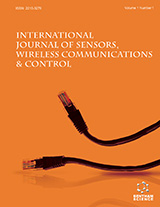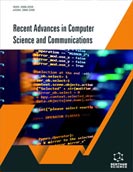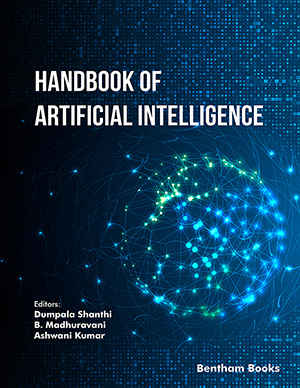Abstract
The Internet of Things has witnessed an upsurge in the number of sensors communicating with each other over the Internet, and this number, currently in billions, is increasing at an expeditious pace. However, this augmentation in the number of interlaced devices can lead to profusion and jamming of the network, thereby degrading energy, latency, and throughput. Load balancing of the network is one of the techniques which could alleviate this issue. This paper reviews the methods that have been employed for load balancing of the Internet of Things, thereby serving the research community two-fold. Firstly, it gives a comprehensive introduction to the classification of load balancing algorithms. Secondly, it offers researchers the prospect of developing intelligent novel algorithms catering to the load balancing predicament.
Keywords: Load balancing, congestion, intelligent algorithms, traditional algorithms, internet of things, machine learning.
[http://dx.doi.org/10.1007/s10586-016-0667-5]
[http://dx.doi.org/10.1109/ICCW.2017.7962722]
[http://dx.doi.org/10.1002/dac.3875]
[http://dx.doi.org/10.1109/TNSM.2015.2402752]
[http://dx.doi.org/10.1016/j.comcom.2020.08.017]
[http://dx.doi.org/10.1109/SITIS.2014.42]
[http://dx.doi.org/10.1109/TMC.2016.2585107]
[http://dx.doi.org/10.1016/j.suscom.2019.100355]
[http://dx.doi.org/10.1016/j.protcy.2013.12.369]
[http://dx.doi.org/10.14569/IJACSA.2013.041021]
[http://dx.doi.org/10.21275/v4i12.NOV151883]
[http://dx.doi.org/10.3390/s18113779] [PMID: 30400631]
[http://dx.doi.org/10.1109/MCOM.2013.6525600]
[http://dx.doi.org/10.3390/s18082479] [PMID: 30065224]
[http://dx.doi.org/10.3390/electronics8040384]
[http://dx.doi.org/10.3390/math8091415]
[http://dx.doi.org/10.1109/JIOT.2020.2982305]
[http://dx.doi.org/10.1007/s10462-017-9559-1]
[http://dx.doi.org/10.1108/IJICC-03-2020-0021]
[http://dx.doi.org/10.1109/COMST.2020.2964534]
[http://dx.doi.org/10.1002/cpe.5913]
[http://dx.doi.org/10.1007/s10586-019-02950-0]
[http://dx.doi.org/10.1016/j.future.2017.12.045]
[http://dx.doi.org/10.1016/j.jestch.2018.09.003]
[http://dx.doi.org/10.1109/ACCESS.2018.2808324]
[http://dx.doi.org/10.1016/j.comcom.2014.09.008]
[http://dx.doi.org/10.1109/ISWCS.2017.8108123]
[http://dx.doi.org/10.1016/j.future.2017.11.012]
[http://dx.doi.org/10.1002/cpe.4123]
[http://dx.doi.org/10.1155/2016/4250746]
[http://dx.doi.org/10.1155/2015/679093]
[http://dx.doi.org/10.1109/ACCESS.2018.2805842]
[http://dx.doi.org/10.1155/2015/531538]
[http://dx.doi.org/10.1186/s13638-019-1624-9]
[http://dx.doi.org/10.1109/NGCT.2015.7375096]
[http://dx.doi.org/10.14445/22492593/IJCOT-V21P301]
[http://dx.doi.org/10.1016/j.jksuci.2018.01.003]
[http://dx.doi.org/10.1109/SDS49854.2020.9143874]
[http://dx.doi.org/10.5120/ijca2017914901]
[http://dx.doi.org/10.1109/TCC.2016.2543722]
[http://dx.doi.org/10.1109/71.954620]
[http://dx.doi.org/10.1109/CONTROL.2016.7737592]
[http://dx.doi.org/10.36478/jeasci.2019.507.515]
[http://dx.doi.org/10.1109/ParCompTech.2013.6621389]
[http://dx.doi.org/10.3390/fi11040090]
[http://dx.doi.org/10.11648/j.ajnc.20190802.11]
[http://dx.doi.org/10.1109/ICoICT.2018.8528803]
[http://dx.doi.org/10.1109/ISSPIT.2017.8388652]
[http://dx.doi.org/10.1002/dac.3840]
[http://dx.doi.org/10.21123/bsj.2019.16.1.0130]
[http://dx.doi.org/10.1109/ICSSIT46314.2019.8987845]
[http://dx.doi.org/10.1080/09540090210144948]
[http://dx.doi.org/10.1109/CEC.2005.1554759]
[http://dx.doi.org/10.1007/s12652-020-01768-8]
[http://dx.doi.org/10.1007/s11276-019-02121-4]
[http://dx.doi.org/10.1007/s11276-019-02083-7]
[http://dx.doi.org/10.1007/978-3-642-58069-7_38]
[http://dx.doi.org/10.1016/j.jpdc.2018.08.007]
[http://dx.doi.org/10.7551/mitpress/1290.003.0004]
[http://dx.doi.org/10.3390/insects4040646] [PMID: 26462528]
[http://dx.doi.org/10.1007/s12083-019-00724-4]
[http://dx.doi.org/10.1007/s11227-016-1936-z]
[http://dx.doi.org/10.1016/j.advengsoft.2016.01.008]
[http://dx.doi.org/10.1007/s10586-017-1628-3]
[http://dx.doi.org/10.1016/j.comcom.2020.03.004]
[http://dx.doi.org/10.1007/s11235-019-00559-7]
[http://dx.doi.org/10.1016/j.eswa.2020.114418]
[http://dx.doi.org/10.1109/ACCESS.2021.3065288]
[http://dx.doi.org/10.1007/978-3-319-76351-4_16]
[http://dx.doi.org/10.1002/dac.4964]
[http://dx.doi.org/10.1108/CW-09-2019-0117]
[http://dx.doi.org/10.1016/j.procs.2019.04.070]
[http://dx.doi.org/10.1007/978-3-642-41136-6]
[http://dx.doi.org/10.1109/ANTHOLOGY.2013.6784996]
[http://dx.doi.org/10.1109/3477.775265] [PMID: 18252324]
[http://dx.doi.org/10.1109/IECON.1993.339060]
[http://dx.doi.org/10.1016/j.heliyon.2018.e00938] [PMID: 30519653]
[http://dx.doi.org/10.14257/ijgdc.2016.9.1.03]
[http://dx.doi.org/10.1016/j.compind.2019.06.002]
[http://dx.doi.org/10.1049/iet-com.2020.0091]
[http://dx.doi.org/10.1016/j.future.2019.09.060]
[http://dx.doi.org/10.1109/MWC.2017.1700244]
[http://dx.doi.org/10.1109/WCNC.2019.8885745]
[http://dx.doi.org/10.1109/ICICIP.2013.6568104]
[http://dx.doi.org/10.1109/JIOT.2019.2935010]



























